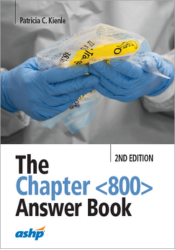Ohio is at the forefront of training and advancing pharmacy technicians into specialized roles.
Historical Highlight
A recent survey by the Ohio State Board of Pharmacy sourced input from its pharmacy technicians regarding workload. Results from this survey revealed that a majority percentage of pharmacy technicians in each practice setting represented planned to stay in the profession for the duration of their careers. (State of Ohio Board of Pharmacy, 2021).
This may be attributed to the development of a state-wide technician advancement initiative. Included in this progressive development plan is the unique opportunity for Ohio high schools and career centers to incorporate board-approved pharmacy technician vocational training programs. As of 2022, eleven public high schools and vocational career centers offer these programs to high school students. (State of Ohio Board of Pharmacy, 2022).
In 2018, the Ohio state board of pharmacy implemented elevated requirements for pharmacy technicians that illuminate the importance of training and advancement by officially recognizing three levels of registration: Pharmacy Technician Trainee, Registered Pharmacy Technician, and Certified Pharmacy Technician (CPhT). (ASHP, 2022).
Ohio State Board of Pharmacy Law
Foundational requirements of applicants to all registrations include the mandate to be at least 18 years old and have successfully completed a high school diploma or general equivalency degree (GED).
At any time, an Ohio pharmacy technician registration application in “Pending”, “Submitted”, or “In-Review” status does not allow the individual to perform the duties of a pharmacy technician.
According to the Board of Pharmacy Laws and Administrative Codes, Ohio acknowledges the following requirements for each registration:
- The purpose of Administrative Code 4729:3-1-01 is to state pharmacy technician definitions.
- The purpose of Administrative Code 4729:3-3-02 is setting standards for pharmacy technician training programs to ensure that graduates of the programs have the basic knowledge and experience in general pharmacy to practice in most pharmacy settings.
- The purpose of Administrative Code(s) 4729:3-1 through 4729:3:5 speaks to pharmacy technician duties scope of practice by registration type. (State of Ohio Board of Pharmacy, 2021).
Pharmacy Technician Roles and Responsibilities
The Pharmacy Technician Trainee is defined as an individual registered as such with the Ohio state board of pharmacy; Intends to enroll - or is currently enrolled - in an approved training program pursuant to the Administrative Code to obtain a pharmacy technician registration or certified pharmacy technician credential; and practices within this state in accordance with the Administrative Code.
Pharmacy technician trainees are required to wear a name tag or badge which contains the designation "Pharmacy Technician Trainee." Under the direct supervision of a pharmacist, a pharmacy technician trainee may engage in the following activities:
- Accept new written, faxed, or electronic prescription orders from a prescriber or a prescriber's agent - but shall not include verbal orders.
- Enter information into and retrieving information from a database or patient profile
- Prepare and affix labels
- Stock dangerous drugs and retrieve those drugs from inventory
- Count and pour dangerous drugs into containers
Place dangerous drugs into containers prior to dispensing by a pharmacist - Non-sterile drug compounding following the completion of site-specific training pursuant to rule 4729:3-3-02 of the Administrative Code
- Sterile drug compounding following the completion of a site-specific training pursuant to rule 4729:3-3-02 of the Administrative Code
- Package and sell a dangerous drug to a patient or patient representative
- Send or receive electronic prescriptions between pharmacies accessing the same prescription records in a centralized database or pharmacy computers linked in any other manner. (State of Ohio Board of Pharmacy, 2021).
The Registered Pharmacy Technician will have completed an approved training program pursuant to the Administrative Code; Maintains a current registration with the Ohio state board of pharmacy in good standing; and practices within this state in accordance with the Administrative Code.
Registered pharmacy technicians are required to wear a name tag or badge which contains the designation "Registered Pharmacy Technician." Under the direct supervision of a pharmacist, a pharmacy technician trainee may engage in all activities that are approved for a Pharmacy Technician Trainee with the addition of:
- Stocking automated drug storage systems, floor stock, and crash carts at a location licensed as a terminal distributor of dangerous drugs if
- The terminal distributor utilizes barcode administration for restocking drugs.
- A pharmacist verifies the final dispensing of a dangerous drug removed from the automated drug storage system.
- Engage in remote entry of prescriptions in accordance rule 4729:5-5-25 of the Administrative Code.
- Engage in remote entry of prescriptions in accordance rule 4729:5-5-25 of the Administrative Code.
- Engage in remote entry of medication orders in accordance with rule 4729:5-9-02.15 of the Administrative Code. (State of Ohio Board of Pharmacy, 2021).
The Certified Pharmacy Technician (CPhT) will have completed an approved training program pursuant to the rule of the Administrative Code; Maintains a current registration with the Ohio state board of pharmacy in good standing; Practices within this state in accordance with rule of the Administrative Code; and maintains a current national pharmacy technician certification from an organization that has been recognized by the board, i.e., the PTCB CPhT or NHA CPhT credential.
Certified pharmacy technicians are required to wear a name tag or badge which contains the designation "Certified Pharmacy Technician." Under the direct supervision of a pharmacist, a certified pharmacy technician may engage in all activities that are approved for a Registered Pharmacy Technician with the addition of the following advanced roles that afford pharmacists the ability to focus on direct patient care while simultaneously providing intrinsic value to the technician role.
- Accepting new verbal prescription orders inclusive of refill authorizations for non-controlled drugs from a prescriber or prescriber’s-agent.
- Stock automated drug storage systems, crash carts, and floor stock at a location licensed as a terminal distributor of dangerous drugs if a pharmacist is not physically present at the licensed location if:
- A pharmacist is readily available to answer questions of the certified pharmacy technician.
- A pharmacist is responsible for conducting routine verifications of the activities of the certified pharmacy technician to prevent the diversion of dangerous drugs.
- Prescription transfers of non-controlled drugs
- Contact a prescriber or prescriber’s agent for the clarification of a prescription order if the clarification does not require professional judgement.
- Perform diagnostic laboratory testing pursuant to rule 4729:3:5 of the Administrative Code.
- During the height of COVID-19, waivers further provisioned Ohio pharmacy technicians with the ability to provide public testing and vaccinations under pharmacist oversight. (State of Ohio Board of Pharmacy, 2021).
National Strides
On the national stage, strides are being made through advocacy efforts to elevate pharmacy technicians beyond the role of basic medication distributive tasks. The Pharmacy Technician Certification Board (PTCB) has introduced nationally recognized, standardized competencies and advancement opportunities for pharmacy technicians. They now offer a broad range of advanced credentials that can lead to the recognition of pharmacy technicians as subject matter experts in their respective specializations. (PTCB, 2023).
- Advanced Certified Pharmacy Technician (CPhT-Adv)
- Certified Pharmacy Technician (CPhT)
- Certified Compounded Sterile Preparation Technician (CSPT)
- Billing and Reimbursement Certificate
- Controlled Substances Diversion Prevention Certificate
- Hazardous Drug Management Certificate
- Immunization Administration Certificate
- Medication History Certificate
- Medication Therapy Management Certificate
- Point-of-Care Testing Certificate
- Regulatory Compliance Certificate
- Supply Chain and Inventory Management Certificate
- Technician Product Verification Certificate
- Nonsterile Compounding Certificate – Coming Soon!
Summary
The landscape of the pharmacy technician role is actively progressing through a season of growth and development. As professional organizations continue to lean into the concept of utilizing technicians to maximize pharmacy accuracy and efficiency, we see the pharmacy technician recognized as a valuable member of the healthcare community and a fulfilling career path.
By defining the three levels of technician status and scope of practice, Ohio has developed a way to elevate the roles and professionalism of pharmacy technicians in their state by delineating a pathway and parameters for advancement. #ASHPPharmTech


